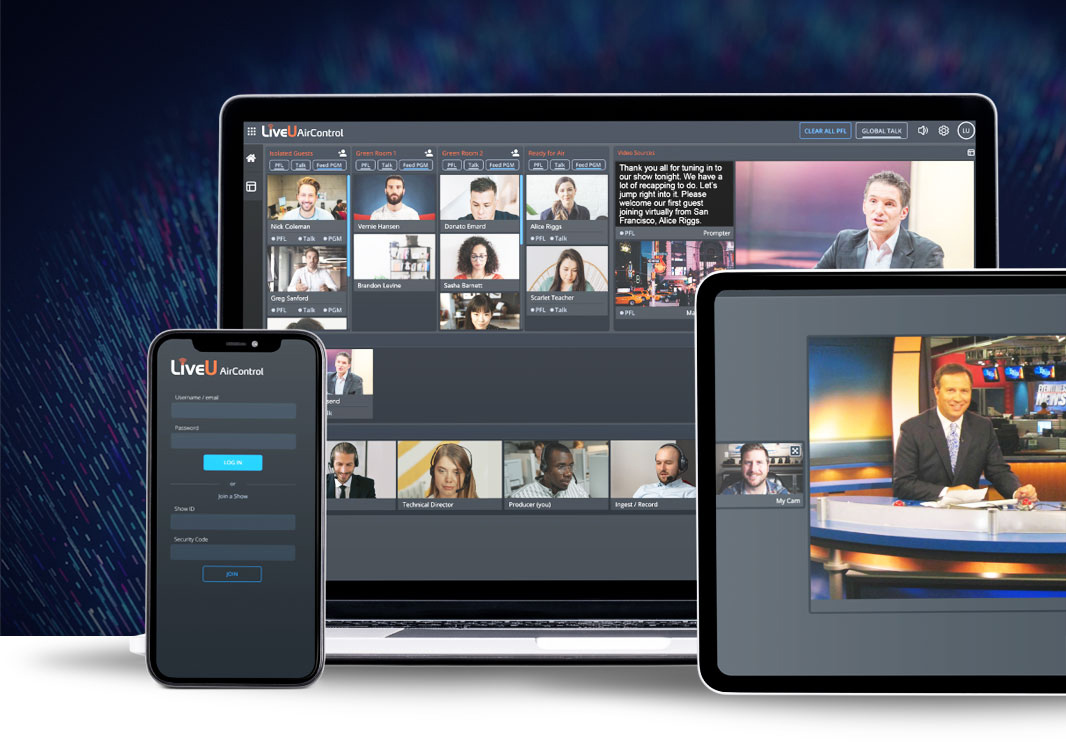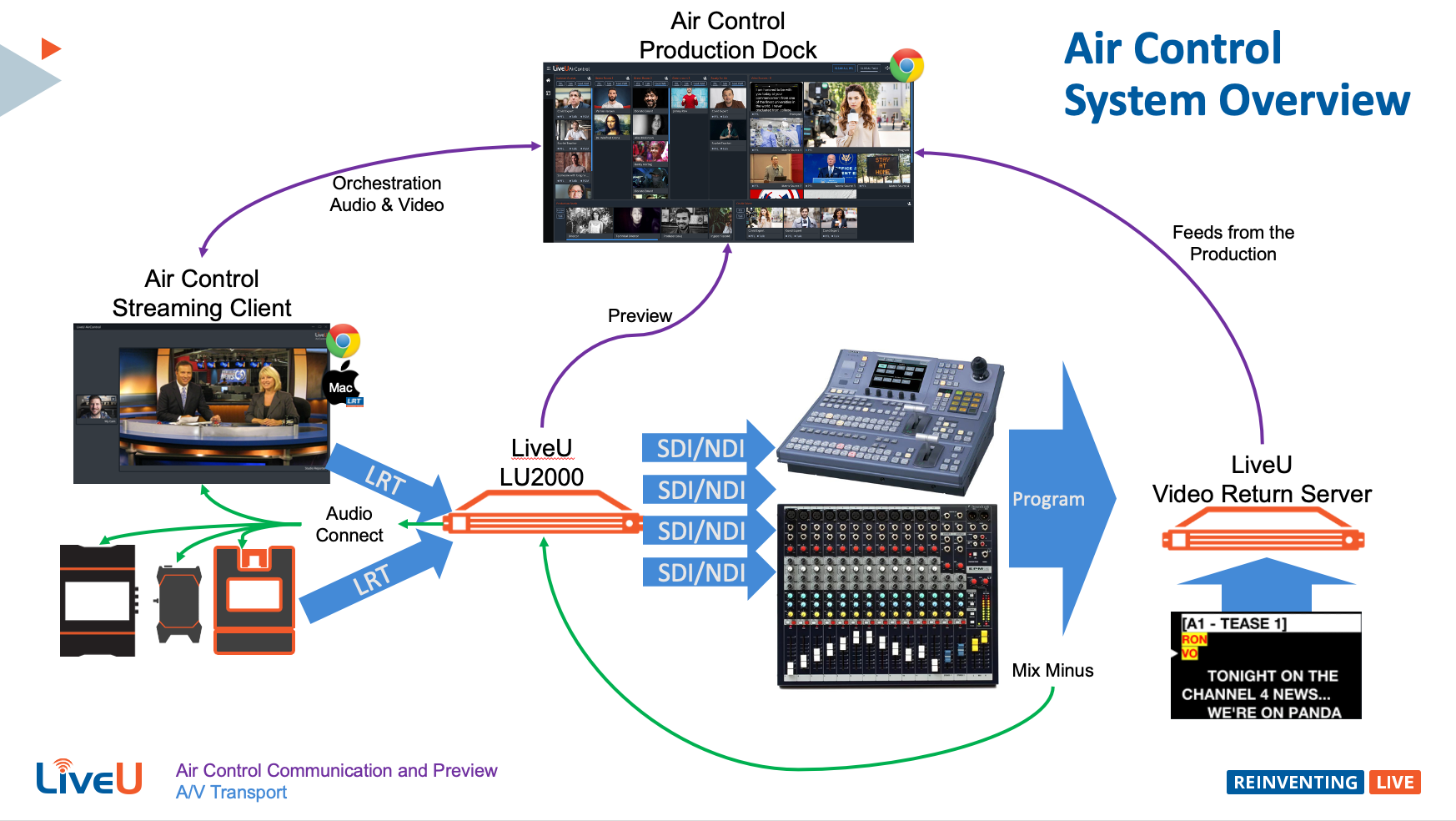
LiveU Unveils Air Control Tool For Live Production In Cloud

A new live production orchestration cloud solution makes it possible for broadcasters to work remotely without compromising quality.
LiveU Air Control is intended as a sustainable solution to replace the “cobbled together” mix of consumer products and tools broadcasters used to ensure they could remain on-air amid COVID-19 work-from-home conditions, said Chris Perry, LiveU’s director for product management.
“Production workflows that have been straightforward over the past 60 years were suddenly turned on their head,” he said. “When we looked at what was pulled together in March of 2020, it looked like a bowl of soup. There was a mountain of equipment” and tools “cobbled together” by broadcasters’ problem solvers to get live shows on air, he said.
“That was wonderful in a pinch,” he added.
But those systems are hard to put together, he said, noting all the complexities involved in bringing a Zoom shot to air, including configuring the computer for audio and turning off pop-ups and updates and alarms. One tiny mistake could lead to “having a train wreck on air,” Perry said.

LiveU Air Control broadcast orchestration cloud solution
LiveU decided to “take the bowl of soup and make a sustainable system,” he said.
What resulted, Perry said, is something that basically mirrors the four-wall brick and mortar control room without actually replacing the equipment.
“It takes snippets of things you might need … and digitizes it,” he said.
Perry said Air Control doesn’t integrate with Zoom and other video conferencing applications, but rather replaces them.
LiveU currently has a number of customers across a range of verticals, including news, sports and corporate, in some stage of trying out Air Control, Perry said.
LiveU Sales Director Janel Fleming said Air Control can be deployed during news broadcasts to quickly invite and get guests on air during normal workflows or breaking news situations, to provide collaboration between directors and crew for REMI workflows, and to allow producers to participate remotely.
It can also, she said, be used for things like large-scale live event management or make it possible to scale up to produce an awards show or draft event remotely.
At the same time, she said, Air Control has “none of the pain points of using a consumer tool in a production role” like doorbell sounds, highlights or popups that must be blocked.
“It’s built for live production. The workflow is optimized as well,” making it easy for the talent and guests while remaining “sophisticated and easy to use” for the crew, Fleming said.
Daniel Pisarski, LiveU’s VP of engineering, said WebRTC and LiveU Reliable Transport (LRT) technologies combine to underpin LiveU Air Control and offer the “best of both worlds.”
WebRTC is a low-latency protocol that is optimized for video conferencing applications, offering latency as low as 150 ms, that can run on any modern web browser, he said. However, because of its origins as a video conferencing technology, he said, it has some drawbacks like lower bit rates, limits to resolution and lower frame rates.
LRT is based on a combination of packet reordering, auto resends, forward error correction and adaptive bit rate encoding technologies, he said, which means it’s optimized for quality regardless of network conditions.
As a result, Pisarski said, when WebRTC and LRT technologies “are combined in Air Control, the result is we can optimize both the orchestration workflow and ensure pristine video delivery.”
LiveU is offering Air Control at $390 per month for the first 10 concurrent users and $39 per month for each subsequent user. Seats are not named, Fleming said, so anyone can use them.
“Hybrid working environments aren’t going away, and content creators continue to evolve,” Fleming said. “We’ve learned to adapt on the fly, but now we need tools for the long-term.”
































Comments (0)